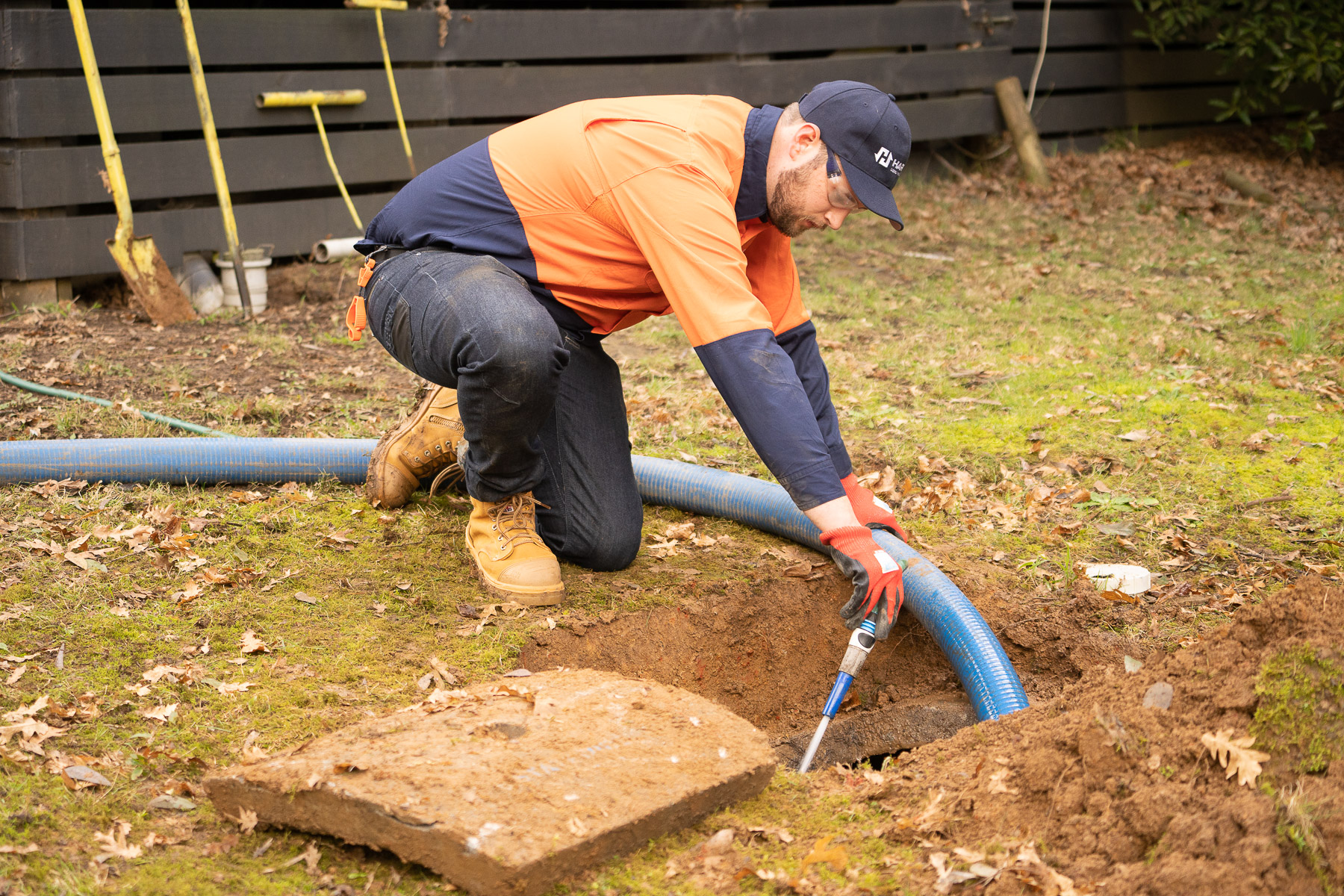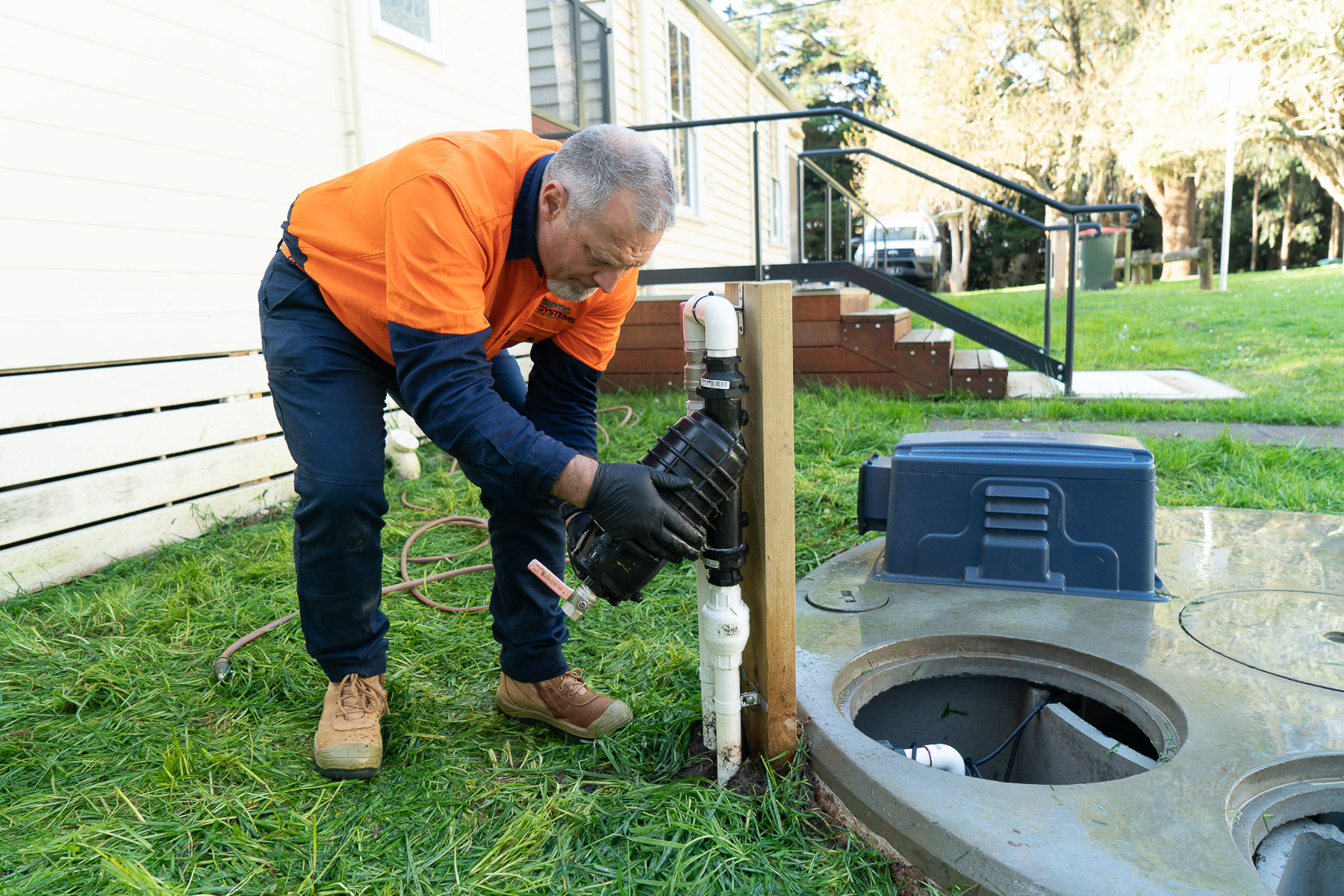Aerated Wastewater Treatment Systems (AWTS) – Secondary Treatment
These days, the AWTS is the most common type of system installed, because the quality of the final effluent is treated to a very high quality. This means that these systems present a much lower risk to the health of your family, neighbouring properties and our local waterways. And because the quality of the effluent is excellent, the water is dispersed just below the surface of the ground, so effectively, you are reusing the treated effluent to water your gardens and lawns.
These types of systems can be installed on any property, including those with rock, sand, high-water table areas, steep gradients, and limited space and they are the preferred system in an environmentally sensitive areas.
Cleaning an irrigation filter
How does an Aerated Wastewater Treatment System (AWTS) work?
- All wastewater from your bathrooms, kitchen and laundry is collected in the Septic Tank (or Primary Chamber). In this tank, the wastewater settle out into three separate layers:
– The fats, oils and grease (FOGs) float to the surface and create a thin layer of ‘scum’;
– The liquids or effluent in the middle; and
– The solids will eventually settle on the bottom of the tank as a layer of ‘sludge’ - As more water enters the system from the house, the existing effluent that has undergone ‘Primary’ treatment, gets pushed into the second chamber or ‘Aeration Tank’. Here, the effluent is aerated with oxygen by an aeration pump in order to help the ‘live’ microbes in the water to digest and breakdown the breakdown the organic waste.
- A third chamber is for additional clarification, as the solids are returned to either the septic chamber or the aeration chamber for further treatment before irrigation can happen.
- In many systems the effluent undergoes disinfection by a Chlorinator which removes any remaining harmful bacteria, viruses and pathogens, producing clean, safe water.
- When the final chamber fills up to a certain level, it will engage a float switch which will automatically engage an irrigation pump to send the final treated effluent out to your irrigation field.
Benefits of AWTS
Quality of effluent is excellent
Suitable for properties with tight acces
Suitable for sites with rock or high–water table
Effluent can be used to water your grass and gardens






